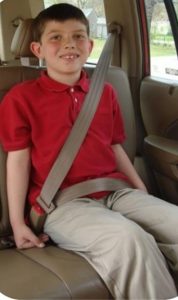3 Conventional Restraints
On This Page
Conventional Car Seats
- Use whenever possible
- Easier to find
- Easier to use
- Less expensive
- Meet Federal Motor Vehicle Safety Standards (FMVSS 213)
- Many have variety of features to assist in positioning
<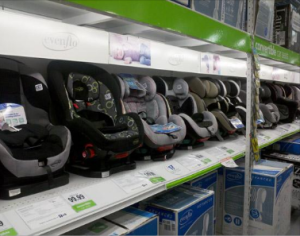
Types of Conventional Car Seats
- Rear-Facing Only
- Convertible (includes All-in-One)
- Combination
- Booster
Rear-Facing Only Car Seats
- Only installed rear-facing
- Lower weight 3-5 pounds
- Upper weight 22-35 pounds
- Helpful features:
- Positioning inserts/extra padding
- Multiple harness slots and crotch strap positions
- Variable recline angles
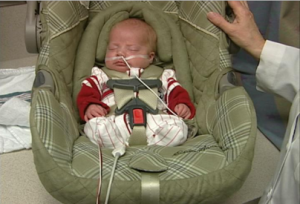
Positioning Infants
- If allowed by car seat manufacturer
- Blanket rolls along sides for stable positioning
- Blanket rolls outside of harness
- Crotch rolls may also be used to prevent slouching
- No extra padding under or behind baby
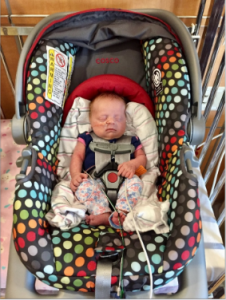
Some infants May Require Additional Medical Screening
- Car Seat Tolerance Screening
- Observe infants born < 37 weeks gestation and other at risk infants for apnea, bradycardia, oxygen desaturation in car seat
- Infants may require, supplemental oxygen, continued hospitalization, or use of car bed for significant documented events may be indicated
- Car seat tolerance screening must be completed again if car bed is selected
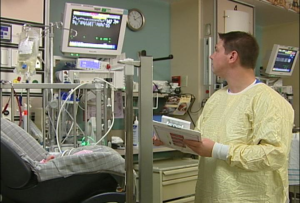
Convertible Car Seats
- Converts from rear-facing to forward-facing seat
- Rear-facing:
- Lower weight 3-5 pounds
- Upper weight 40-50 pounds
- Forward-facing:
- Lower weight 20-25 pounds
- Upper weight 40-65 pounds
- 2 years of age for some models
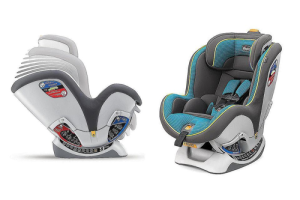
All-in-One Car Seats
- Rear-facing, Forward-facing and Belt Positioning Booster
- Rear-facing:
- Lower weight 4-5 pounds
- Upper weight 40-50 pounds
- Forward-facing:
- Lower weight 22-25 pounds
- Upper weight 50-65 pounds
- 2 years of age for some models
- Belt Positioning Booster
- Lower weight 40 pounds
- Upper weight 80-120 pounds
- Up to 57 inches
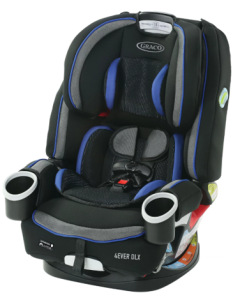
Combination Car Seats
- Changes from car seat with harness to booster by removing harness and using vehicle lap-and-shoulder belt for crash protection
- Harness mode:
- Lower weight 22-30 pounds
- Upper weight 40-65 pounds
- Child must be 2 years old for some models
- Belt Positioning Booster
- Lower weight 40 pounds
- Upper weight 100-120 pounds
- Up to 57 inches
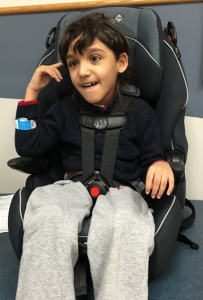
Booster Seats
- “Boosts” child up so seat belt fits
- Requires lap-and-shoulder belt
- Lower weight 30-40 pounds
- Upper weight 100-120 pounds
- Up to 57 inches
- Minimum age of 4 years for some boosters
- High-back or backless models
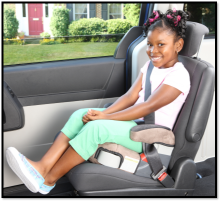
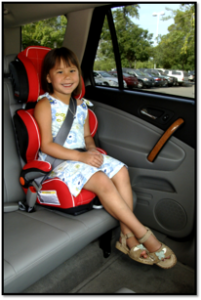
Seat Belt Fits
- Sits with bottom against the back seat and knees bend at seat edge
- Shoulder belt crosses clavicle and chest, not face, neck, or throat
- Lap belt low and flat across upper thighs – not abdomen
- Children under 13 always in back seat
